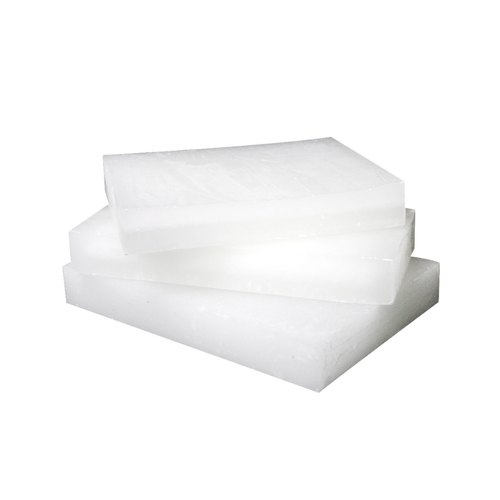Description:
Paraffin wax is a mixture of hydrocarbon molecules, primarily composed of alkanes. It has a high melting point, which allows it to solidify at room temperature and form a protective barrier on the skin when applied in cosmetic products. This barrier helps to retain moisture and protect the skin from external factors.
Benefits:
- Easy to Use: Paraffin wax has a low melting point, making it easy to handle and pour into candle molds.
- Excellent Scent Throw: It has the ability to hold and release fragrance oils, resulting in a strong and long-lasting scent throw when the candle is burned.
- Smooth and Even Burning: Paraffin wax has a predictable and consistent burn, producing a steady flame and even wax pool.
- Versatility: It can be easily colored and shaped, allowing for creative and customized candle designs.
Usage: Paraffin wax is a primary ingredient in candle making, used to create candles of various shapes, sizes, and scents.
Recommended Usage: The recommended usage of paraffin wax in candle making may vary depending on the desired candle characteristics, container size, and other factors.
Solubility: Paraffin wax is insoluble in water but can be melted and mixed with other candle-making materials, such as fragrance oils and dyes.
Applications:
- Pillar Candles: It can be used to create pillar candles by pouring the melted wax into molds or by hand shaping the wax.
- Scented Candles: It is often used as a base for scented candles, allowing the fragrance oils to blend well and release a pleasant aroma when the candle is lit.
Storage:
Paraffin wax should be stored in a cool, dry place away from direct sunlight and heat sources to prevent melting and maintain its quality. It is recommended to keep the wax in airtight containers or bags to protect it from moisture and odor absorption.
Follow the steps to make a candle :
Prepare the Work Area: Set up a clean and well-ventilated workspace. Cover the surface with newspaper or a disposable tablecloth to catch any wax drips.
Gather Supplies: Collect all the necessary supplies, including paraffin wax, wicks, candle molds or containers, a double boiler or a heat-resistant container for melting the wax, a thermometer, fragrance oils or essential oils (optional), and any desired candle dyes or additives.
Prepare the Mold or Container: If using molds, ensure they are clean and dry. If using containers, place the wicks in the center and secure them using a wick holder or adhesive.
Melt the Wax: Use a double boiler or a heat-resistant container placed in a pot of simmering water to melt the paraffin wax. Avoid direct heat or open flames, as paraffin wax is flammable. Heat the wax until it reaches the recommended melting temperature, usually between 160°F and 180°F (71°C and 82°C).
Add Fragrance and Color (Optional): If desired, add fragrance oils or essential oils to the melted wax according to the recommended usage rate. You can also incorporate candle dyes or color blocks to achieve the desired hue. Stir gently to evenly distribute the fragrance and color.
Pour the Wax: Carefully pour the melted wax into the prepared molds or containers. Fill them to the desired level, leaving a bit of space at the top.
Set the Wick: While the wax is still warm and slightly liquid, ensure that the wick remains centered in the candle. You can use a wick holder or gently straighten and align it manually. Allow the candle to cool and harden.
Trim the Wick: Once the candle is completely cooled and hardened, trim the wick to a suitable length, usually around ¼ inch (6 mm). This will help with a cleaner burn and prevent excessive smoking.
Wax Hardening: Allow candles to cool and completely harden for at least 24 hours before lighting them. Once it has hardened, it is ready to use and enjoy.
Country of origin: China
Country of packing: KSA



